Developed country
A developed country (or industrialized country, high-income country, more economically developed country (MEDC), advanced country[3][4]) is a sovereign state that has a high quality of life, developed economy and advanced technological infrastructure relative to other less industrialized nations. Most commonly, the criteria for evaluating the degree of economic development are gross domestic product (GDP), gross national product (GNP), the per capita income, level of industrialization, amount of widespread infrastructure and general standard of living.[5] Which criteria are to be used and which countries can be classified as being developed are subjects of debate. A point of reference of US$20,000 in 2021 USD nominal GDP per capita for the International Monetary Fund (IMF) is a good point of departure, it is a similar level of development to the United States in 1960.[6]
Developed countries have generally more advanced post-industrial economies, meaning the service sector provides more wealth than the industrial sector. They are contrasted with developing countries, which are in the process of industrialisation or are pre-industrial and almost entirely agrarian, some of which might fall into the category of Least Developed Countries. As of 2015, advanced economies comprise 60.8% of global GDP based on nominal values and 42.9% of global GDP based on purchasing-power parity (PPP) according to the IMF.[7]
Definition and criteria
_per_capita_in_2021.svg.png.webp)
Economic criteria have tended to dominate discussions. One such criterion is income per capita; countries with high gross domestic product (GDP) per capita would thus be described as developed countries. Another economic criterion is industrialisation; countries in which the tertiary and quaternary sectors of industry dominate would thus be described as developed. More recently another measure, the Human Development Index (HDI), which combines an economic measure, national income, with other measures, indices for life expectancy and education has become prominent. This criterion would define developed countries as those with a very high (HDI) rating. The index, however, does not take into account several factors, such as the net wealth per capita or the relative quality of goods in a country. This situation tends to lower the ranking for some of the most advanced countries, such as the G7 members and others.[9][10]
According to the United Nations Statistics Division:
There is no established convention for the designation of "developed" and "developing" countries or areas in the United Nations system.[11]
And it notes that:
The designations "developed" and "developing" are intended for statistical convenience and do not necessarily express a judgement about the stage reached by a particular country or area in the development process.[12]
Similar terms
Terms linked to the concept developed country include "advanced country", "industrialized country", "'more developed country" (MDC), "more economically developed country" (MEDC), "Global North country", "first world country", and "post-industrial country". The term industrialized country may be somewhat ambiguous, as industrialisation is an ongoing process that is hard to define. The first industrialized country was the United Kingdom, followed by Belgium. Later it spread further to Germany, United States, France and other Western European countries. According to some economists such as Jeffrey Sachs, however, the current divide between the developed and developing world is largely a phenomenon of the 20th century.[13]
Mathis Wackernagel calls the binary labeling of countries as "neither descriptive nor explanatory. It is merely a thoughtless and destructive endorsement of GDP fetish. In reality, there are not two types of countries, but over 200 countries, all faced with the same laws of nature, yet each with unique features."[14]
A 2021 analysis proposes the term emerged to describe markets, economies, or countries that have graduated from emerging market status, but have not yet reached the level equivalent to developed countries.[15] Multinational corporations from these emerged markets present unique patterns to overseas expansion and knowledge acquisition from foreign countries.
Country lists by various criteria
Human Development Index (HDI)

The UN HDI is a statistical measure that gauges a country's level of human development. While there is a strong correlation between having a high HDI score and being a prosperous economy, the UN points out that the HDI accounts for more than income or productivity. Unlike GDP per capita or per capita income, the HDI takes into account how income is turned "into education and health opportunities and therefore into higher levels of human development."
Since 1990, Norway (2001–2006, 2009–2019), Japan (1990–1991 and 1993), Canada (1992 and 1994–2000) and Iceland (2007–2008) have had the highest HDI score.
Many countries listed by IMF as "advanced", possess an HDI over 0.800, the threshold for "very high" human development. Many countries[Note 1] possessing an HDI of 0.800 and over are conversely listed by IMF as "advanced". Thus, many "advanced economies" are characterized by an HDI score of 0.800 or higher.[16]
The 2020 Human Development Report by the United Nations Development Programme was released on 15 December 2020, and calculates HDI values based on estimates for 2019. Below is the list of the "very high human development" countries:[17][18]
 = increase.
= increase. = steady.
= steady. = decrease.
= decrease.- The number in parentheses represents the number of ranks the country has climbed (up or down) relative to the ranking in the year of 2018.
|
| ||||||||||||||||||||||||||||||||||||||||||||||||||||||||||||||||||||||||||||||||||||||||||||||||||||||||||||||||||||||||||||||||||||||||||||||||||||||||||||||||||||||||||||||||||||||||||||||||||||||||||||||||||||||||||||||||||||||||||||||||||||||||||||||||||||||||||||||||||||||||||||||||||||||||||||||||||||||||||||||||||||||||||||||||||||||||||||
As a non-UN member, the government of Taiwan calculates its own HDI based on UNDP's 2010 methodology,[19][20] which had a value of 0.916 in 2019,[Note 2] ranked 23 globally. Additionally, while the HDI for the Chinese special administrative region (SAR) of Hong Kong is calculated by the UNDP, it is not applicable for the other SAR of Macau. According to the 2021 annual report published by Statistical Bureau of Macau, its HDI was estimated as 0.922 in 2019.[21] These values place both Taiwan and Macau well within the group of "Very high human development". Furthermore, in 2009 a United Nations project calculated the HDI for all of its members, as well as Taiwan, Macau, and many dependent territories. The HDI values for the countries of San Marino and Monaco, which have not been included in official annual HDI reports, were found to be at 0.961 and 0.956 respectively. This places both countries firmly within the category of countries with "Very high human development" as well. The dependent territories with HDI values equivalent to "Very high human development" were: Jersey, Cayman Islands, Bermuda, Guernsey, Gibraltar, Norfolk Island, Faroe Islands, Isle of Man, British Virgin Islands, Falkland Islands, Aruba, Puerto Rico, Martinique, Greenland, and Guam.[22] Of note, the HDI values in the 2009 report were calculated using the old HDI formula, while HDI values after the year 2010 are calculated with a different formula.
High-income economies
Some institutions have produced lists of developed countries: the UN (list shown above), the CIA,[23] and some providers of stock market indices (the FTSE Group, MSCI, S&P, Dow Jones, STOXX, etc.). The latter is not included here because its association of developed countries with countries with both high incomes and developed markets is not deemed as directly relevant.[Note 3]
However, many other institutions have created more general lists referred to when discussing developed countries. For example, the International Monetary Fund (IMF) identifies 39 "advanced economies".[16][24] The OECD's 37 members are known as the "developed countries club".[25][26][27] The World Bank identifies 81 "high income countries".[28] Other standards, such as the 30-50 Club (GDP per capita over $30,000 and population over 50 million) have been developed to categorize highly developed and influential countries.
World Bank high-income economies

According to the World Bank the following 80 countries and territories are classified as "high-income economies". As of the 2022 fiscal year, high-income economies are those that had a GNI per capita of $12,696 or more in 2020.[28]
36 countries and territories in Europe:
 Andorra
Andorra Austria
Austria.svg.png.webp) Belgium
Belgium /
/  Channel Islands
Channel Islands Croatia
Croatia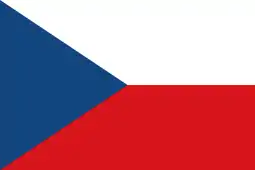 Czech Republic
Czech Republic Denmark
Denmark Estonia
Estonia Faroe Islands
Faroe Islands Finland
Finland France
France Germany
Germany Gibraltar
Gibraltar Greece
Greece Hungary
Hungary Iceland
Iceland Ireland
Ireland Isle of Man
Isle of Man Italy
Italy Liechtenstein
Liechtenstein Latvia
Latvia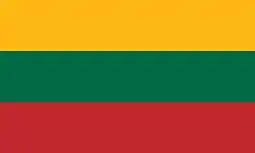 Lithuania
Lithuania Luxembourg
Luxembourg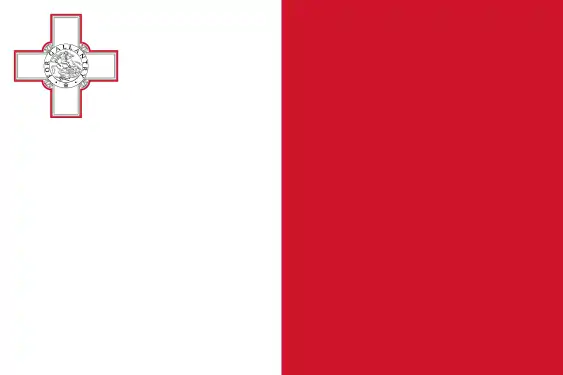 Malta
Malta Monaco
Monaco Netherlands
Netherlands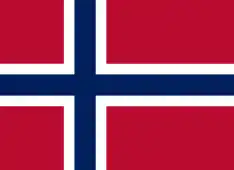 Norway
Norway Poland
Poland Portugal
Portugal San Marino
San Marino Slovakia
Slovakia Slovenia
Slovenia Spain
Spain Sweden
Sweden Switzerland
Switzerland United Kingdom
United Kingdom
20 countries and territories in the Americas:
15 countries and territories in Asia:
eight countries and territories in Oceania:
one country in Africa:
nine former high-income economies:[29]
 American Samoa (1987–89)
American Samoa (1987–89) Argentina (2013, 2015, 2017)
Argentina (2013, 2015, 2017) Equatorial Guinea (2007–14)
Equatorial Guinea (2007–14)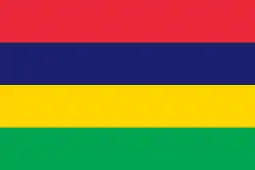 Mauritius (2019)
Mauritius (2019).svg.png.webp) Netherlands Antilles (1994–2009)#
Netherlands Antilles (1994–2009)# Panama (2017–19)
Panama (2017–19) Romania (2019)
Romania (2019) Russia (2012–14)
Russia (2012–14) Venezuela (2014)
Venezuela (2014)
* Between 1994 and 2009, as a part of the ![]() Netherlands Antilles.
Netherlands Antilles.
# Dissolved on 10 October 2010, succeeded by Curaçao and Sint Maarten.
High-income OECD members
According to the World Bank, the following 34 members are classified as "OECD High-Income":[30][31]
26 countries in Europe:
three countries in the Americas:
three countries in Asia:
two countries in Oceania:
Development Assistance Committee members

There are 29 OECD member countries and the European Union—in the Development Assistance Committee (DAC),[32] a group of the world's major donor countries that discuss issues surrounding development aid and poverty reduction in developing countries.[33] The following OECD member countries are DAC members:
23 countries in Europe:
two countries in the Americas:
two countries in Asia:
two countries in Oceania:
IMF advanced economies

According to the International Monetary Fund, 40 countries and territories are officially listed as "advanced economies",[1][34] with the addition of 7 microstates and dependencies modified by the CIA which were omitted from the IMF version :[23]
28 countries and dependencies in Europe classified by the IMF, 6 others given by the CIA :
 Andorra
Andorra Austria
Austria.svg.png.webp) Belgium
Belgium Cyprus
Cyprus Czech Republic
Czech Republic Denmark
Denmark Estonia
Estonia Finland
Finland France
France Germany
Germany Greece
Greece Iceland
Iceland Ireland
Ireland Italy
Italy Latvia
Latvia Lithuania
Lithuania Luxembourg
Luxembourg Malta
Malta Netherlands
Netherlands Norway
Norway Portugal
Portugal San Marino
San Marino Slovakia
Slovakia Slovenia
Slovenia Spain
Spain Sweden
Sweden Switzerland
Switzerland United Kingdom
United Kingdom
Plusd
seven countries and territories in Asia:
three countries and territories in the Americas classified by the IMF, one territory given by the CIA :
two countries in Oceania:
d The CIA has modified an older version of the IMF's list of 38 Advanced Economies, noting that the IMF's Advanced Economies list "would presumably also cover the following nine smaller countries of Andorra, Bermuda, Faroe Islands, Guernsey, Holy See, Jersey, Liechtenstein, Monaco, and San Marino[...]". San Marino (2012) and Andorra (2021) were later included in the IMF's list.[23]
Paris Club members

There are 22 permanent members in the Paris Club (French: Club de Paris), a group of officials from major creditor countries whose role is to find coordinated and sustainable solutions to the payment difficulties experienced by debtor countries.
15 countries in Europe:
three countries in the Americas:
three countries in Asia:
one country in Oceania:
Comparative table (2022)
Comparative table of countries with a "very high" human development (0.800 or higher), according to UNDP; OECD members; "advanced" economies, according to the IMF; "high income" economies, according to the World Bank; and income per capita (purchasing power parity) higher than $22,000, according to the IMF.
| Developed Countries | |||||
|---|---|---|---|---|---|
| Countries | HDI[18] | OECD[35] | IMF[36] | WB[37] | Per capita PPP 2021[38] |
| 2018 | |||||
| Yes since 2005 | Yes since 2018 | Yes since 2015 | Yes since 2012 | Yes since 2011 | |
| 2016 | |||||
| Yes since 2005 | Yes since 2016 | Yes since 2014 | Yes since 2012 | Yes since 2013 | |
| 2011 | |||||
| Yes since 2003 | Yes since 2010 | Yes since 2011 | Yes since 2006 | Yes since 2010 | |
| 2010 | |||||
| Yes since 1991 | Yes since 2010 | Yes since 1997[39] | Yes since 1987 | Yes since 2004 | |
| Yes since 1998 | Yes since 2010 | Yes since 2007 | Yes since 1997 | Yes since 2004 | |
| 2009 | |||||
| Yes since 2001 | Yes since 1995 | Yes since 2009 | Yes since 2006 | Yes since 2005 | |
| Yes since 2006 | Yes since 2000 | Yes since 2009 | Yes since 2007 | Yes since 2007 | |
| 2005 | |||||
| Yes since 2005 | Yes since 1961 | Yes since 1989[40] | Yes since 1994 | Yes since 2004 | |
| Yes since 1999 | Yes since 1996 | Yes since 1997[41] | Yes since 2001 | Yes since 2005 | |
| 2003 | |||||
| Yes since 2001 | Yes since 1961 | Yes since 1989[40] | Yes since 1996 | Yes since 2003 | |
| 2000 | |||||
| Yes before 1990 | Yes since 1973 | Yes since 1945 | Yes since 1987 | Yes since 2000 | |
| 1999 | |||||
| Yes since 1995 | Yes since 1961 | Yes since 1945 | Yes since 1987 | Yes since 1999 | |
| 1997 | |||||
| Yes since 1994 | Yes since 1969 | Yes since 1945 | Yes since 1987 | Yes since 1997 | |
| Yes since 1996 | Yes since 1961 | Yes since 1945 | Yes since 1987 | Yes since 1997 | |
| Yes since 1992 | Yes since 1961 | Yes since 1945 | Yes since 1987 | Yes since 1997 | |
| 1996 | |||||
| Yes before 1990 | Yes since 1961 | Yes since 1945 | Yes since 1987 | Yes since 1996 | |
| 1995 | |||||
| Yes since 1995 | Yes since 1962 | Yes since 1945 | Yes since 1987 | Yes since 1993 | |
| Yes before 1990 | Yes since 1961 | Yes since 1945 | Yes since 1987 | Yes since 1995 | |
| 1994 | |||||
| Yes before 1990 | Yes since 1971 | Yes since 1945 | Yes since 1987 | Yes since 1994 | |
| Yes before 1990 | Yes since 1961 | Yes since 1945 | Yes since 1987 | Yes since 1994 | |
| Yes before 1990 | Yes since 1961 | Yes since 1945 | Yes since 1987 | Yes since 1994 | |
| Yes since 1993 | Yes since 1961 | Yes since 1945 | Yes since 1987 | Yes since 1994 | |
| 1992 | |||||
| Yes since 1992 | Yes since 1961 | Yes since 1945 | Yes since 1987 | Yes since 1992 | |
| Yes before 1990 | Yes since 1961 | Yes since 1945 | Yes since 1987 | Yes since 1992 | |
| Yes before 1990 | Yes since 1964 | Yes since 1945 | Yes since 1987 | Yes since 1992 | |
| Yes since 1992 | Yes since 1961 | Yes since 1945 | Yes since 1987 | Yes since 1985 | |
| 1991 | |||||
| Yes since 1991 | Yes since 1961 | Yes since 1945 | Yes since 1987 | Yes since 1991 | |
| Yes before 1990 | Yes since 1961 | Yes since 1945 | Yes since 1987 | Yes since 1991 | |
| 1989 | |||||
| Yes before 1990 | Yes since 1961 | Yes since 1945 | Yes since 1987 | Yes since 1989 | |
| 1987 | |||||
| Yes before 1990 | Yes since 1961 | Yes since 1945 | Yes since 1987 | Yes since 1985 | |
| Yes before 1990 | Yes since 1961 | Yes since 1945 | Yes since 1987 | Yes since 1984 | |
| Countries to be considered developed (1 pending recognition) | |||||
| Countries | HDI[18] | OECD[35] | IMF[36] | WB[37] | Per capita PPP 2021[38] |
| Yes since 2003 | No | Yes since 2021 | Yes since 1990 | Yes before 2010 | |
| Yes since 2007 | Yes since 2010 | No | Yes since 2012 | Yes since 2013 | |
| Yes since 2005 | Yes since 1996 | No | Yes since 2014 | Yes since 2010 | |
| Yes since 2003 | Yes since 1996 | No | Yes since 2009 | Yes since 2011 | |
| Yes since 2003 | No | Yes since 2008 | Yes since 2002 | Yes since 2005 | |
| Yes since 2001 | No | Yes since 2001 | Yes since 1988 | Yes since 2000 | |
| Yes since 1999 | No | Yes since 1997[41] | Yes since 1987 | Yes since 1990 | |
| In process (2 pending recognitions) | |||||
| Countries | HDI[18] | OECD[35] | IMF[36] | WB[37] | per capita PPP 2021[38] |
| Yes since 2019 | Yes since 2021 | No | No | Yes since 2021 | |
| Yes since 2007 | No | No | Yes since 2017 | Yes since 2014 | |
| Yes since 2014 | No | No | Yes since 2012 | Yes since 2016 | |
| Yes since 2016 | No | No | Yes since 1987 | Yes since 1996 | |
| Yes since 2015 | Yes since 1961 | No | No | Yes since 2013 | |
| Yes since 2014 | No | No | Yes since 1987 | Yes before 1980 | |
| Yes since 2012 | No | No | Yes since 2007 | Yes since 1990 | |
| No data | No | Yes since 2012 | Yes since 2000 | Yes before 2004 | |
| Yes since 2012 | No | No | Yes since 2001 | Yes since 1981 | |
| Yes since 2010 | No | No | Yes since 2004 | Yes before 1980 | |
| Yes since 2004 | No | No | Yes since 1987 | Yes before 1980 | |
| No data | No | Yes since 1997[41] | Yes since 1987 | Yes since 2002 | |
| Yes since 1999 | No | No | Yes since 1990 | Yes before 1985 | |
| Yes since 1996 | No | No | Yes since 1987 | Yes before 1980 | |
| Other recognitions | |||||
| Countries | HDI[18] | OECD[35] | IMF[36] | WB[37] | per capita PPP 2021[38] |
| Yes since 2019 | No | No | No | Yes since 2021 | |
| Yes since 2006 | No | No | No | Yes since 2021 | |
| Yes since 2013 | No | No | No | Yes since 2021 | |
| Yes since 2013 | No | No | Yes since 2020 | No | |
| Yes since 2019 | No | No | No | Yes since 2014 | |
| Yes since 2015 | No | No | No | Yes since 2018 | |
| Yes since 2013 | No | No | No | Yes since 2016 | |
| Yes since 2016 | No | No | No | Yes since 2012 | |
| Yes since 2015 | No | No | No | Yes since 2013 | |
| No | No | No | Yes since 2012 | Yes since 2014 | |
| No | No | No | Yes since 2014 | Yes since 2013 | |
| Yes since 2013 | No | No | No | Yes since 2011 | |
| Yes since 2011 | No | No | Yes since 2006 | No | |
| No | No | No | Yes since 2006 | Yes since 2005 | |
| Yes since 2000 | No | No | Yes since 1994 | No data | |
| No | No | No | No | Yes since 2021 | |
| No | No | No | No | Yes since 2021 | |
| No | Yes since 2020 | No | No | No | |
| Yes since 2019 | No | No | No | No | |
| Yes since 2019 | No | No | No | No | |
| No | No | No | Yes since 2019 | No | |
| No | No | No | Yes since 2012 | No | |
| Yes since 2012 | No | No | No | No | |
| No | Yes since 1994 | No | No | No | |
| No data | No | No | Yes since 1994 | No data | |
Rankings
The list below features some outstanding countries selected from the comparative table above with average data of quality (best place in rankings) and quantity (considered in how many of the 36 rankings) with an evaluation greater than 60%.
| Rank | Country | INDEX | QUALITY | QUANTITY | Democracy | Corruption[42] | Quality of living[43] | Quality of digital living[44] | Cost of living[45] | HDI[46] | per capita PPP[47] | Peace[48] | Prosperity[49] | Economic Freedom Heritage[50] | Human Freedom Fraser[51] | Politic/Social Freedom House[52] | Competitiveness | Doing Business[53] | Gay friendly[54] | Energy transition [55] | Environmental Performance[56] | Green Future[57] | Happiness[58] | Social Progress[59] | Global Talent[60] | PISA science | PISA read | PISA maths | Mobile internet speed[61] | Fixed internet speed | Resilience [62] | Fragile state[63] | Growth promise[64] | E-gov[65] | English skills[66] | Cities in motion[67] | Press freedom[68] | Rule of law[69] | Good Government[70] | Labor rights[71] |
|---|---|---|---|---|---|---|---|---|---|---|---|---|---|---|---|---|---|---|---|---|---|---|---|---|---|---|---|---|---|---|---|---|---|---|---|---|---|---|---|---|
| 2022 | 2022 | 2019 | 2021 | 2022 | 2021 | 2021 | 2021 | 2021 | 2022 | 2021 | 2022 | 2019 | 2019 | 2021 | 2021 | 2020 | 2022 | 2022 | 2021 | 2021 | 2020 | 2020 | 2020 | 2022 | 2022 | 2021 | 2021 | 2019 | 2020 | 2021 | 2021 | 2021 | 2021 | 2022 | 2021 | |||||
| AVG
(quality; quantity) >60% |
1-(SUMRanks /(#Ranks
*100)) |
COUNT.IF (Ranks;
"100") /#Ranks |
full | > score 70 | top 100 | > score 0.6 | low top 100 | > very high | >22000 | 1.8 | 2nd green on map | > mostly free | > score 8 | > score 90 | > score 60 | > score 60 | > score 7 | score 70 | > score 60 | green | > score 6.4 | tier 2 | < 2nd quartile | > score 400 | > score 400 | > score 400 | > 30mb | > 80mb | > score 90 | > green | > score 6 | > very high | > high | > relative high | < score 20 | > score 70 | > score 0.6 | < rating 2 | ||
| 1 | 95,8% | 0,92 | 1,00 | 6 | 1 | 8 | 1 | 95 | 10 | 13 | 3 | 1 | 10 | 3 | 6 | 10 | 4 | 5 | 3 | 1 | 2 | 2 | 3 | 5 | 25 | 19 | 13 | 8 | 5 | 1 | 5 | 4 | 1 | 3 | 6 | 4 | 1 | 4 | 11 | |
| 2 | 94,6% | 0,89 | 1,00 | 4 | 4 | 23 | 13 | 57 | 7 | 18 | 15 | 3 | 11 | 9 | 3 | 8 | 10 | 5 | 1 | 8 | 9 | 7 | 7 | 4 | 20 | 11 | 17 | 21 | 21 | 7 | 8 | 8 | 6 | 8 | 14 | 3 | 4 | 7 | 11 | |
| 3 | 94,1% | 0,88 | 1,00 | 1 | 4 | 25 | 14 | 98 | 1 | 8 | 14 | 2 | 14 | 13 | 1 | 17 | 9 | 18 | 2 | 9 | 5 | 8 | 1 | 9 | 28 | 20 | 19 | 2 | 20 | 2 | 2 | 7 | 13 | 5 | 12 | 1 | 2 | 6 | 11 | |
| 4 | 93,9% | 0,88 | 1,00 | 11 | 8 | 11 | 11 | 68 | 8 | 14 | 21 | 6 | 8 | 11 | 7 | 4 | 42 | 14 | 11 | 11 | 3 | 5 | 8 | 6 | 16 | 27 | 9 | 5 | 19 | 16 | 12 | 2 | 10 | 1 | 8 | 6 | 6 | 5 | 11 | |
| 5 | 90,1% | 0,86 | 0,94 | 3 | 1 | 31 | 3 | 100 | 11 | 23 | 13 | 4 | 9 | 6 | 2 | 11 | 20 | 100 | 6 | 7 | 6 | 1 | 2 | 7 | 7 | 6 | 16 | 18 | 34 | 6 | 1 | 6 | 4 | 9 | 22 | 2 | 3 | 1 | 11 | |
| 6 | 89,6% | 0,85 | 0,94 | 9 | 7 | 2 | 8 | 100 | 2 | 5 | 7 | 5 | 2 | 1 | 13 | 5 | 36 | 14 | 4 | 3 | 14 | 4 | 5 | 1 | 24 | 28 | 11 | 13 | 15 | 5 | 6 | 1 | 16 | 25 | 11 | 10 | 100 | 2 | 38 | |
| 7 | 87,7% | 0,81 | 0,94 | 15 | 10 | 3 | 9 | 59 | 6 | 20 | 17 | 9 | 16 | 15 | 21 | 7 | 22 | 10 | 100 | 10 | 8 | 14 | 10 | 11 | 16 | 21 | 20 | 29 | 100 | 4 | 13 | 11 | 25 | 11 | 7 | 13 | 5 | 8 | 11 | |
| 8 | 87,4% | 0,80 | 0,94 | 2 | 1 | 3 | 23 | 89 | 14 | 31 | 2 | 8 | 4 | 2 | 4 | 19 | 1 | 14 | 8 | 19 | 100 | 10 | 12 | 16 | 13 | 11 | 28 | 35 | 14 | 18 | 4 | 9 | 8 | 100 | 23 | 8 | 7 | 9 | 38 | |
| 9 | 84,6% | 0,78 | 0,92 | 12 | 13 | 3 | 20 | 71 | 16 | 25 | 10 | 15 | 15 | 6 | 5 | 14 | 23 | 1 | 100 | 20 | 15 | 15 | 6 | 13 | 9 | 6 | 12 | 15 | 23 | 13 | 9 | 10 | 28 | 100 | 30 | 14 | 12 | 13 | 100 | |
| 10 | 84,6% | 0,77 | 0,92 | 20 | 13 | 1 | 21 | 100 | 18 | 17 | 6 | 11 | 22 | 21 | 26 | 21 | 27 | 5 | 5 | 6 | 100 | 11 | 14 | 17 | 28 | 28 | 22 | 25 | 100 | 8 | 14 | 19 | 15 | 2 | 18 | 17 | 9 | 12 | 11 | |
| 11 | 80,0% | 0,74 | 0,86 | 7 | 13 | 33 | 24 | 100 | 2 | 3 | 8 | 12 | 3 | 5 | 9 | 24 | 24 | 18 | 100 | 16 | 12 | 13 | 13 | 15 | 23 | 8 | 20 | 100 | 100 | 11 | 11 | 12 | 27 | 100 | 33 | 12 | 10 | 11 | 11 | |
| 12 | 79,0% | 0,69 | 0,89 | 100 | 18 | 28 | 25 | 62 | 14 | 21 | 20 | 23 | 100 | 23 | 11 | 22 | 46 | 18 | 100 | 15 | 11 | 19 | 16 | 18 | 20 | 23 | 15 | 26 | 38 | 15 | 18 | 16 | 41 | 6 | 41 | 11 | 14 | 21 | 100 | |
| 13 | 78,9% | 0,72 | 0,86 | 9 | 18 | 11 | 17 | 88 | 8 | 22 | 16 | 16 | 12 | 8 | 14 | 16 | 14 | 10 | 100 | 13 | 100 | 12 | 11 | 10 | 16 | 17 | 30 | 16 | 100 | 14 | 10 | 15 | 5 | 100 | 17 | 25 | 13 | 17 | 100 | |
| 14 | 78,7% | 0,71 | 0,86 | 18 | 11 | 41 | 10 | 58 | 13 | 27 | 33 | 13 | 24 | 14 | 25 | 9 | 8 | 5 | 7 | 4 | 4 | 17 | 18 | 12 | 15 | 15 | 17 | 36 | 100 | 10 | 30 | 13 | 100 | 100 | 1 | 100 | 16 | 10 | 100 | |
| 15 | 76,9% | 0,65 | 0,89 | 100 | 100 | 37 | 30 | 44 | 38 | 45 | 4 | 28 | 31 | 18 | 16 | 34 | 39 | 2 | 100 | 27 | 18 | 100 | 25 | 28 | 27 | 25 | 29 | 37 | 18 | 27 | 16 | 27 | 35 | 7 | 52 | 9 | 26 | 25 | 38 | |
| 16 | 75,0% | 0,69 | 0,81 | 5 | 13 | 100 | 100 | 100 | 4 | 16 | 1 | 10 | 13 | 12 | 17 | 26 | 26 | 10 | 10 | 17 | 1 | 3 | 4 | 14 | 35 | 36 | 26 | 100 | 100 | 22 | 3 | 14 | 12 | 100 | 5 | 16 | 100 | 19 | 11 | |
| 17 | 73,5% | 0,64 | 0,83 | 100 | 22 | 39 | 7 | 90 | 26 | 26 | 100 | 22 | 100 | 34 | 100 | 15 | 32 | 100 | 9 | 5 | 7 | 20 | 19 | 21 | 25 | 23 | 26 | 24 | 25 | 19 | 20 | 21 | 19 | 31 | 3 | 100 | 23 | 16 | 38 | |
| 18 | 73,2% | 0,66 | 0,81 | 17 | 18 | 49 | 12 | 100 | 19 | 36 | 12 | 19 | 100 | 15 | 12 | 6 | 29 | 100 | 100 | 12 | 19 | 100 | 9 | 19 | 6 | 15 | 6 | 40 | 12 | 25 | 19 | 17 | 14 | 100 | 4 | 100 | 15 | 15 | 38 | |
| 19 | 72,9% | 0,65 | 0,81 | 14 | 9 | 18 | 15 | 79 | 23 | 1 | 100 | 7 | 5 | 10 | 10 | 18 | 72 | 100 | 100 | 2 | 100 | 6 | 15 | 8 | 34 | 38 | 34 | 14 | 29 | 3 | 7 | 5 | 33 | 13 | 100 | 20 | 8 | 100 | 100 | |
| 20 | 71,9% | 0,60 | 0,83 | 100 | 100 | 43 | 18 | 42 | 25 | 41 | 31 | 24 | 100 | 25 | 41 | 23 | 30 | 2 | 100 | 14 | 13 | 29 | 20 | 32 | 30 | 100 | 35 | 49 | 11 | 21 | 38 | 31 | 17 | 100 | 25 | 29 | 21 | 26 | 38 | |
| 21 | 71,3% | 0,62 | 0,81 | 100 | 13 | 86 | 19 | 100 | 29 | 40 | 30 | 17 | 7 | 4 | 18 | 31 | 18 | 100 | 100 | 34 | 100 | 100 | 21 | 24 | 5 | 5 | 8 | 28 | 100 | 28 | 28 | 18 | 3 | 22 | 55 | 15 | 11 | 14 | 38 | |
| 22 | 71,2% | 0,67 | 0,75 | 100 | 4 | 25 | 6 | 100 | 11 | 2 | 11 | 14 | 1 | 100 | 100 | 1 | 2 | 100 | 100 | 100 | 100 | 27 | 30 | 3 | 2 | 2 | 2 | 19 | 2 | 12 | 15 | 3 | 11 | 4 | 9 | 100 | 17 | 3 | 38 | |
| 23 | 66,6% | 0,55 | 0,78 | 100 | 100 | 69 | 28 | 36 | 27 | 38 | 9 | 27 | 21 | 23 | 38 | 32 | 41 | 100 | 100 | 20 | 100 | 18 | 22 | 25 | 22 | 26 | 22 | 100 | 100 | 20 | 27 | 28 | 39 | 27 | 39 | 100 | 22 | 22 | 38 | |
| 24 | 64,7% | 0,57 | 0,72 | 16 | 100 | 77 | 2 | 60 | 23 | 30 | 100 | 29 | 19 | 100 | 100 | 13 | 5 | 100 | 100 | 28 | 10 | 100 | 17 | 27 | 8 | 9 | 7 | 3 | 22 | 36 | 21 | 23 | 2 | 100 | 19 | 100 | 20 | 19 | 100 | |
| 25 | 63,5% | 0,49 | 0,78 | 13 | 18 | 78 | 100 | 53 | 55 | 65 | 100 | 37 | 34 | 33 | 8 | 54 | 100 | 5 | 13 | 100 | 100 | 30 | 39 | 51 | 53 | 49 | 59 | 57 | 31 | 47 | 22 | 42 | 26 | 100 | 100 | 18 | 25 | 100 | 11 | |
| 26 | 63,3% | 0,52 | 0,75 | 100 | 100 | 81 | 16 | 100 | 34 | 39 | 37 | 33 | 17 | 19 | 100 | 39 | 11 | 100 | 100 | 29 | 100 | 34 | 27 | 35 | 31 | 33 | 35 | 39 | 39 | 30 | 25 | 30 | 20 | 24 | 100 | 100 | 18 | 29 | 38 | |
| 27 | 62,3% | 0,50 | 0,75 | 100 | 100 | 41 | 27 | 54 | 29 | 32 | 32 | 31 | 100 | 26 | 43 | 30 | 58 | 100 | 100 | 20 | 17 | 31 | 23 | 36 | 39 | 33 | 32 | 48 | 100 | 33 | 39 | 39 | 37 | 100 | 42 | 100 | 100 | 34 | 11 | |
| 28 | 62,1% | 0,49 | 0,75 | 100 | 100 | 90 | 100 | 37 | 37 | 50 | 35 | 30 | 18 | 21 | 100 | 41 | 19 | 100 | 12 | 40 | 100 | 100 | 34 | 33 | 29 | 30 | 24 | 54 | 100 | 39 | 34 | 34 | 49 | 26 | 100 | 22 | 24 | 30 | 38 | |
| 29 | 60,5% | 0,54 | 0,67 | 100 | 100 | 34 | 5 | 56 | 17 | 9 | 100 | 20 | 25 | 15 | 100 | 2 | 6 | 100 | 100 | 24 | 100 | 16 | 24 | 2 | 19 | 13 | 38 | 22 | 9 | 100 | 37 | 20 | 9 | 100 | 2 | 100 | 100 | 18 | 100 |
Criticism
Many developed countries were only seen to have "developed" from the Industrial Age which preceded the age of colonialism, which redistributed the wealth of countries such as India during the British colonisation of India during Europe's rivalry for conquest of the world.[72] France also engaged in a quest for an empire. For nearly 400 years, France colonised territories in Africa, the Middle East, Asia, and North America that it regarded as 'possessions' of the French Empire.[73][74] Other examples include Japan's colonisation of East Asia in its quest for "Greater East Asian Co-Prosperity Sphere", which was later deemed to be an imperialist and fascist front by the Japanese for Japanese expansionism.[75][76][77] It is commonly argued that developed countries or coloniser countries sought to bring civilisation, but the opposite often happened instead, such as in instances of genocide, examples including the genocide of Australian Aborigines, the original inhabitants of Australia.[78][79][80] Other countries' gain in industrialisation and wealth also happened as a result from policies which robbed the wealth of others, such as the Jews being robbed of their wealth during the Holocaust, or other means of gaining wealth that resulted from war such as Switzerland shoring of Nazi gold.[81][82][83][84] Additionally, some countries involvement in proxy wars such as South Korea's involvement in Vietnam secured it $993 million in earnings for siding with American forces, propelling it from a poor country to one of the richest countries on Earth due to undue gains.[85]
See also
Notes
- Namely sovereign states, i.e., excluding Macau: In 2003, the government of Macau calculated its HDI as being 0.909 (the UN does not calculate Macau's HDI); In January 2007, the People's Daily Archived 7 December 2008 at the Wayback Machine reported (from China Modernization Report 2007): "In 2004... Macau... had reached the level of developed countries". The UNCTAD Archived 10 July 2007 at the Wayback Machine organisation (of the UN), as well as the CIA Archived 9 April 2008 at the Wayback Machine, classify Macau as a "developing" territory. The World Bank Archived 28 August 2019 at the Wayback Machine classifies Macau as a high income economy (along with developed economies as well as with few developing economies).
- In the 2018 Subnational Human Development Index (SHDI) Database, Taiwan's HDI was given as 0.880 among China's data. However, from 2019 onward, Taiwan and Hong Kong are no longer included in the SHDI Database among Chinese divisions. By contrast, the HDIs which published by the Statistical Bureau of Taiwan in its 2019 and 2020 reports were displayed as 0.911 in 2018, and 0.916 in 2019 respectively. The reason for the discrepancy was due to lack of available national data for Taiwan in the UNDP database, and Taiwan is also excluded from its HDI data for China. The SHDI claimed that the data collection for Taiwan was also derived from the Taiwanese Directorate General of Budget, Accounting and Statistics ; the latter source is used as primary data in this article.
- The Developed Countries Glossary Archived 20 December 2014 at the Wayback Machine entry reads: "The following countries are classified by FTSE as developed countries: Australia, Austria, Belgium/Luxembourg, Canada, Denmark, Finland, France, Germany, Greece, Hong Kong (China), Ireland, Israel, Italy, Japan, Netherlands, New Zealand, Norway, Portugal, Singapore, South Korea, Spain, Sweden, Switzerland, United Kingdom and the United States."
- Geographically a part of Asia, geopolitically a part of Europe.
References
- "World Economic and Financial Surveys World Economic Outlook Database—WEO Groups and Aggregates Information". IMF.org. International Monetary Fund. Archived from the original on 22 December 2019. Retrieved 12 May 2020.
- Least Developed Countries Archived 17 May 2011 at the Wayback Machine (2018 list Archived 21 December 2019 at the Wayback Machine)
- "Fiscal Policy and Inclusive Growth in Advanced Countries: Their Experience and Implications for Asia" (PDF). adb.org. Asian Development Bank. December 2014. Retrieved 8 July 2021.
{{cite web}}: CS1 maint: url-status (link) - "Advanced Countries Will Benefit Most from Progress in Technology, with Lesser Benefits to Other Nations". rand.org. RAND Corporation. 1 June 2006. Retrieved 8 July 2021.
{{cite web}}: CS1 maint: url-status (link) - Developed Economy Definition Archived 22 March 2016 at the Wayback Machine. Investopedia (16 April 2010). Retrieved 12 July 2013.
- World Bank (1 January 1960). "Constant GDP per capita for the United States". FRED, Federal Reserve Bank of St. Louis. Retrieved 15 June 2021.
- "Report for Selected Country Groups and Subjects". www.imf.org. Archived from the original on 4 March 2016.
- Data from the IMF is used.
- The Courier. Commission of the European Communities. 1994. Archived from the original on 15 March 2020. Retrieved 20 January 2021.
- "Human development index". Economics Help. Archived from the original on 17 December 2020. Retrieved 23 September 2018.
- "Millennium Development Indicators: World and regional groupings". United Nations Statistics Division. 2003. Note b. Archived from the original on 10 February 2005. Retrieved 13 May 2017.
- "Standard Country and Area Codes Classifications (M49): Developed Regions". United Nations Statistics Division. Archived from the original on 11 July 2017. Retrieved 13 May 2017.
- Sachs, Jeffrey (2005). The End of Poverty. New York, New York: The Penguin Press. ISBN 1-59420-045-9.
- Wackernagel, Mathis; Beyers, Bert (2019). Ecological Footprint: Managing Our Biocapacity Budget. Gabriola Island, BC, Canada: New Society Publishers. p. 132. ISBN 978-0-86571-911-8. Archived from the original on 30 December 2019. Retrieved 20 January 2021.
- Lee, Eun Su; Liu, Wei; Yang, Jing Yu (23 September 2021). "Neither developed nor emerging: Dual paths for outward FDI and home country innovation in emerged market MNCs". International Business Review: 101925. doi:10.1016/j.ibusrev.2021.101925. ISSN 0969-5931. S2CID 244268711.
- "IMF Advanced Economies List. World Economic Outlook, April 2016, p. 148" (PDF). Archived from the original (PDF) on 21 April 2016.
- Human Development Report 2020 Overview- The Next Frontier: Human Development and the Anthropocene (PDF). hdr.undp.org. United Nations Development Programme. 15 December 2020. ISBN 978-9-211-26442-5. Retrieved 15 July 2021.
{{cite book}}: CS1 maint: url-status (link) - Human Development Report 2020 The Next Frontier: Human Development and the Anthropocene (PDF). hdr.undp.org. United Nations Development Programme. 15 December 2020. pp. 343–346. ISBN 978-9-211-26442-5. Archived (PDF) from the original on 15 December 2020. Retrieved 15 December 2020.
- "What is the human development index (HDI)? How are relevant data queried?" (PDF). Directorate General of Budget, Accounting and Statistics, Executive Yuan, Taiwan (ROC). Retrieved 14 March 2021.
- "人類發展指數(Human Development Index, HDI)" (PDF) (in Chinese (Taiwan)). Directorate General of Budget, Accounting and Statistics, Executive Yuan, Taiwan (ROC). 6 January 2011. Retrieved 13 March 2021.
- "Macau in Figures, 2021". 澳門統計暨普查局(DSEC). p. 4. Retrieved 9 June 2021.
- Filling Gaps in the Human Development Index Archived 5 March 2016 at the Wayback Machine, United Nations ESCAP, February 2009
- CIA (2008). "Appendix B. International Organizations and Groups". World Factbook. Archived from the original on 9 April 2008. Retrieved 10 April 2008.
- World Economic Outlook Archived 21 April 2016 at the Wayback Machine, International Monetary Fund, September 2011, p. 165.
- "Archived copy". Archived from the original on 21 February 2009. Retrieved 25 January 2009.
{{cite web}}: CS1 maint: archived copy as title (link) - "Indiana Express". Archived from the original on 27 January 2010.
- Minutes of Forum #26:Global Strategy Series 2 – Japan as It Should Be (Outline) | Economic and Social Research Institute, Cabinet Office, Government of Japan Archived 30 October 2007 at the Wayback Machine. Esri.go.jp. Retrieved 12 July 2013.
- https://datahelpdesk.worldbank.org/knowledgebase/articles/906519-world-bank-country-and-lending-groups , World Bank. Accessed on 8 July 2021.
- https://datatopics.worldbank.org/world-development-indicators/the-world-by-income-and-region.html , The World by Income and Region, World Bank. Accessed on 8 July 2021.
- "Doing Business 2019 Fact Sheet: OECD High-Income" (PDF). World Bank. Archived (PDF) from the original on 1 November 2018. Retrieved 31 October 2018.
- "Doing Business 2019 Regional Profile: OECD High Income" (PDF). World Bank. Archived (PDF) from the original on 1 November 2018. Retrieved 31 October 2018.
- Peer reviews of DAC members – Organisation for Economic Co-operation and Development Archived 27 May 2013 at the Wayback Machine. Oecd.org. Retrieved 22 October 2013.
- DAC website >> "The DAC in Dates" Archived 15 February 2010 at the Wayback Machine, On the DAC's self-description, see the introductory letter. On other events, refer to the relevant section by date.
- "World Economic and Financial Surveys World Economic Outlook Database—All countries/Advanced economies (40 countries)". IMF.org. International Monetary Fund. Retrieved 13 October 2021.
{{cite web}}: CS1 maint: url-status (link) - "Our global reach – OECD". www.oecd.org. Archived from the original on 24 September 2015. Retrieved 20 January 2021.
- "World Economic Outlook Database – Changes to the Database". www.imf.org. Archived from the original on 29 December 2017. Retrieved 7 February 2019.
- "World Bank Country and Lending Groups – World Bank Data Help Desk". datahelpdesk.worldbank.org. Archived from the original on 28 October 2019. Retrieved 20 January 2021.
- "World Economic Outlook Database, October 2019". www.imf.org. International Monetary Fund. Archived from the original on 28 June 2020. Retrieved 16 March 2020.
- "International Monetary Fund Annual Report 1997". International Monetary Fund. Archived from the original on 25 June 2020. Retrieved 8 May 2020.
- "World Economic Outlook, October 1989" (PDF). International Monetary Fund. p. 12. Archived (PDF) from the original on 28 June 2020. Retrieved 8 May 2020.
- "International Monetary Fund Annual Report 1997". International Monetary Fund. Retrieved 8 May 2020.
- "Corruption Perceptions Index". Transparency.org. Archived from the original on 24 July 2013. Retrieved 20 January 2021.
- "Quality of Living City Ranking | Mercer". mobilityexchange.mercer.com. Archived from the original on 17 April 2020. Retrieved 27 March 2019.
- "Digital Quality of Life Index 2020". Surfshark.
- "Cost of Living Index. Updated Sep 2019". Expatistan, cost of living comparisons. Archived from the original on 16 January 2021. Retrieved 15 September 2019.
- "Human Development Report 2018 – "Human Development Indices and Indicators"" (PDF). HDRO (Human Development Report Office) United Nations Development Programme. pp. 22–25. Archived (PDF) from the original on 15 May 2020. Retrieved 14 September 2018.
- "World Economic Outlook Database April 2019". www.imf.org. Archived from the original on 24 July 2019. Retrieved 14 May 2019.
- Humanity, Vision of. "Global Peace Index". Archived from the original on 19 June 2019. Retrieved 20 January 2021.
- "Legatum Prosperity Index 2019 :: Legatum Prosperity Index 2019". www.prosperity.com. Archived from the original on 5 January 2021. Retrieved 20 January 2021.
- "Country Rankings: World & Global Economy Rankings on Economic Freedom". www.heritage.org. Archived from the original on 16 September 2017. Retrieved 20 January 2021.
- "You are being redirected..." www.fraserinstitute.org. Archived from the original on 10 November 2019. Retrieved 15 September 2019.
- "Freedom House rates 210 countries and territories in Freedom in the World, and 65 countries in Freedom on the Net". Archived from the original on 1 January 2021. Retrieved 20 January 2021.
- "Rankings". World Bank. Archived from the original on 16 January 2020. Retrieved 27 March 2019.
- "SPARTACUS Gay Travel Index 2019 | Spartacus Gay Travel Blog". Archived from the original on 7 November 2020. Retrieved 27 March 2019.
- "ETI".
{{cite web}}: CS1 maint: url-status (link) - "Downloads | Environmental Performance Index". epi.envirocenter.yale.edu. Archived from the original on 22 April 2020. Retrieved 27 March 2019.
- "Future Green".
{{cite web}}: CS1 maint: url-status (link) - "Home". worldhappiness.report. Archived from the original on 30 November 2020. Retrieved 27 March 2019.
- "2018 Social Progress Index". 2018 Social Progress Index. Archived from the original on 25 January 2019. Retrieved 27 March 2019.
- "GTCI Report 2019 – Country Data". GTCI Report 2019. Archived from the original on 1 January 2021. Retrieved 27 March 2019.
- "Speedtest Global Index – Monthly comparisons of internet speeds from around the world". Speedtest Global Index. Archived from the original on 4 January 2018. Retrieved 14 May 2019.
- "Resilience Index".
{{cite web}}: CS1 maint: url-status (link) - "Global Data | Fragile States Index". fragilestatesindex.org. Archived from the original on 15 July 2019. Retrieved 15 September 2019.
- Selfin, Vikas Papriwal, Ravi Suri, Yael (21 July 2019). "The Growth Promise Indicators – 2019 report – KPMG | AE". KPMG. Archived from the original on 29 November 2020. Retrieved 15 September 2019.
- "Data Center". publicadministration.un.org. Archived from the original on 31 October 2020. Retrieved 15 September 2019.
- "EF EPI 2018 – EF English Proficiency Index – Downloads". www.ef.edu. Archived from the original on 29 July 2020. Retrieved 15 September 2019.
- "cities in motion". Archived from the original on 27 November 2020. Retrieved 20 January 2021.
- "Press". Archived from the original on 22 May 2020. Retrieved 20 January 2021.
- "Rule of law". Archived from the original on 17 January 2021. Retrieved 20 January 2021.
- "GGI".
{{cite web}}: CS1 maint: url-status (link) - "labor rights". Archived from the original on 1 October 2020. Retrieved 20 January 2021.
- PANDEY, POPY (6 July 2021). "How Britain Looted $45 Trillion From India". Medium. Retrieved 24 February 2022.
- Judge, Anne (18 March 2005). "French as a Tool for Colonialism: Aims and Consequences".
{{cite journal}}: Cite journal requires|journal=(help) - "The Ongoing Relationship Between France and its Former African Colonies". E-International Relations. 11 June 2011. Retrieved 24 February 2022.
- Swan, William L. (1996). "Japan's Intentions for Its Greater East Asia Co-Prosperity Sphere as Indicated in Its Policy Plans for Thailand". Journal of Southeast Asian Studies. 27 (1): 139–149. ISSN 0022-4634.
- "From Co-Prosperity to Japanese Colonization · Narratives of World War II in the Pacific · Bell Library Exhibits". library.tamucc.edu. Retrieved 24 February 2022.
- https://rks.koar.kr/assets/pdf/7533/journal-8-2-65.pdf
- News, Opening Hours 10am-5pmFree General EntryClosed Christmas Day Address 1 William StreetSydney NSW 2010 Australia Phone +61 2 9320 6000 www australian museum Copyright © 2022 The Australian Museum ABN 85 407 224 698 View Museum. "Genocide in Australia". The Australian Museum. Retrieved 24 February 2022.
- "The killing times: the massacres of Aboriginal people Australia must confront". The Guardian. 3 March 2019. Retrieved 24 February 2022.
- "Aboriginal Australians 'still suffering effects of colonial past'". BBC News. 16 July 2020. Retrieved 24 February 2022.
- Jerusalem, Associated Press in (20 January 2007). "Most of wealth Nazis stole from Jews still missing". The Guardian. Retrieved 24 February 2022.
- Magazine, Smithsonian; Boissoneault, Lorraine. "A 1938 Nazi Law Forced Jews to Register Their Wealth—Making It Easier to Steal". Smithsonian Magazine. Retrieved 24 February 2022.
- "From Nazis to refineries: How Switzerland has handled the world's gold". SWI swissinfo.ch. Retrieved 24 February 2022.
- "Swiss kept billions in looted Nazi gold". www.writing.upenn.edu. Retrieved 24 February 2022.
- https://idic.mx/wp-content/uploads/2014/09/HowKoreaGotRich.pdf
External links
 Quotations related to Developed country at Wikiquote
Quotations related to Developed country at Wikiquote- IMF (advanced economies)
- The World Factbook Archived 9 April 2008 at the Wayback Machine (developed countries)
- United Nations Statistics Division (definition)
- List of countries, United Nations Statistics Division (developed regions)
- World Bank (high-income economies)
